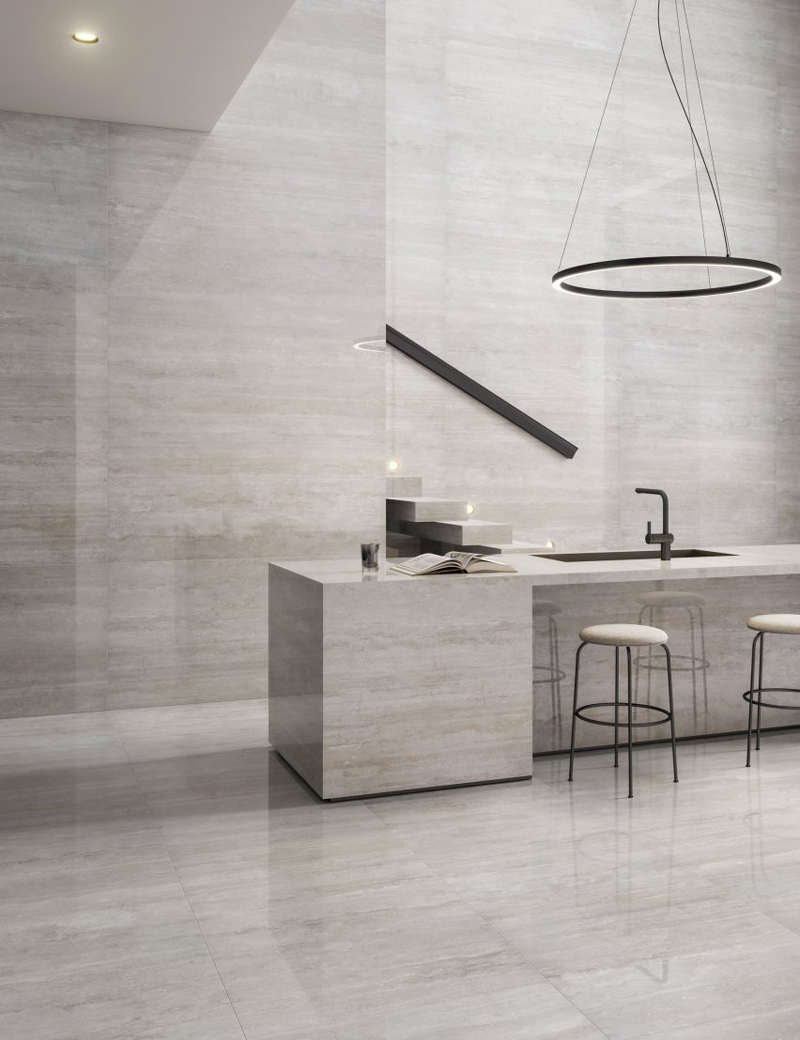Travertine is a type of natural stone that has been used for centuries for various purposes. It is quarried in many parts of the world and can be found in various colors, including white, beige, tan, and brown. Travertine tiles are a popular choice for flooring, countertops, and backsplashes, and they are also often used for exterior applications such as paving stones and cladding.
In this blog post, we will discuss the many uses of travertine stone and tiles. We will also provide tips on how to care for your travertine surfaces. Let’s get started!

What is travertine and where does it come from?
Travertine is a type of limestone that forms when hot water and other chemicals dissolved in the water rise to the surface and evaporate. This leaves behind calcite deposits, aragonite, and other minerals that make up travertine. It is often used for construction because it is strong and weathers well.
The travertine deposits are found in many places, but the most famous are those at Tivoli near Rome. The Romans quarried it extensively for building materials and also used it for baths and churches. Today there is a large spa complex at Tivoli made up of many hot springs that discharge water heavily laden with calcium carbonate.
Travertine tile – what are the benefits compared to other types of tile?
A few benefits set travertine tile apart from other types of tile. For starters, travertine is a natural stone quarried in a certain way to create tiles with lots of character and variation. This means that no two tiles are exactly alike, adding an interesting element of uniqueness to your floor or wall.
Travertine is also a very durable tile and can withstand a lot of wear and tear, making it ideal for high-traffic areas. It also has a high level of resistance to staining and fading, making it a good choice for high-traffic areas. Additionally, travertine tile has a relatively low price tag compared to other types of stone tile.
Travertine pavers – what are the benefits compared to other types of pavers?
Travertine pavers have a few distinct benefits over other types of pavers. Travertine is a natural stone which means that the color and texture of each paver are unique, lending an air of sophistication and elegance to any outdoor space. Additionally, travertine pavers are incredibly durable and resistant to staining, making them a perfect choice for often-used areas. Finally, because travertine is a natural stone, it absorbs heat from the sun, radiating warmth throughout the space on cooler days. This makes the travertine an ideal choice for patios and outdoor living spaces.

Uses for travertine in the home and outdoors
Travertine tile is a limestone used for flooring, countertops, and other decorative purposes. It has a unique look and feels that sets it apart from other types of tile.
Outdoors: travertine can be used as paving stones or as part of a retaining wall. It is also popular for use in landscaping, where it can be used to create fountains, ponds, and other features.
Inside the home: travertine can be used in place of ceramic tile or marble. It is commonly used in bathrooms and kitchens but can be used in any room of the house. Travertine is both durable and stylish, making it a popular choice for many homeowners.

How to care for and clean travertine surfaces
Travertine should be cleaned with a mild soap or detergent and water using a soft cloth. Be sure to rinse the surface thoroughly after cleaning to remove all of the soap or detergent. A 50-50 solution of vinegar and water can also be used to clean travertine; just spray the solution on the surface and wipe it off with a damp cloth. Finally, always dry the surface completely after cleaning to prevent staining.
